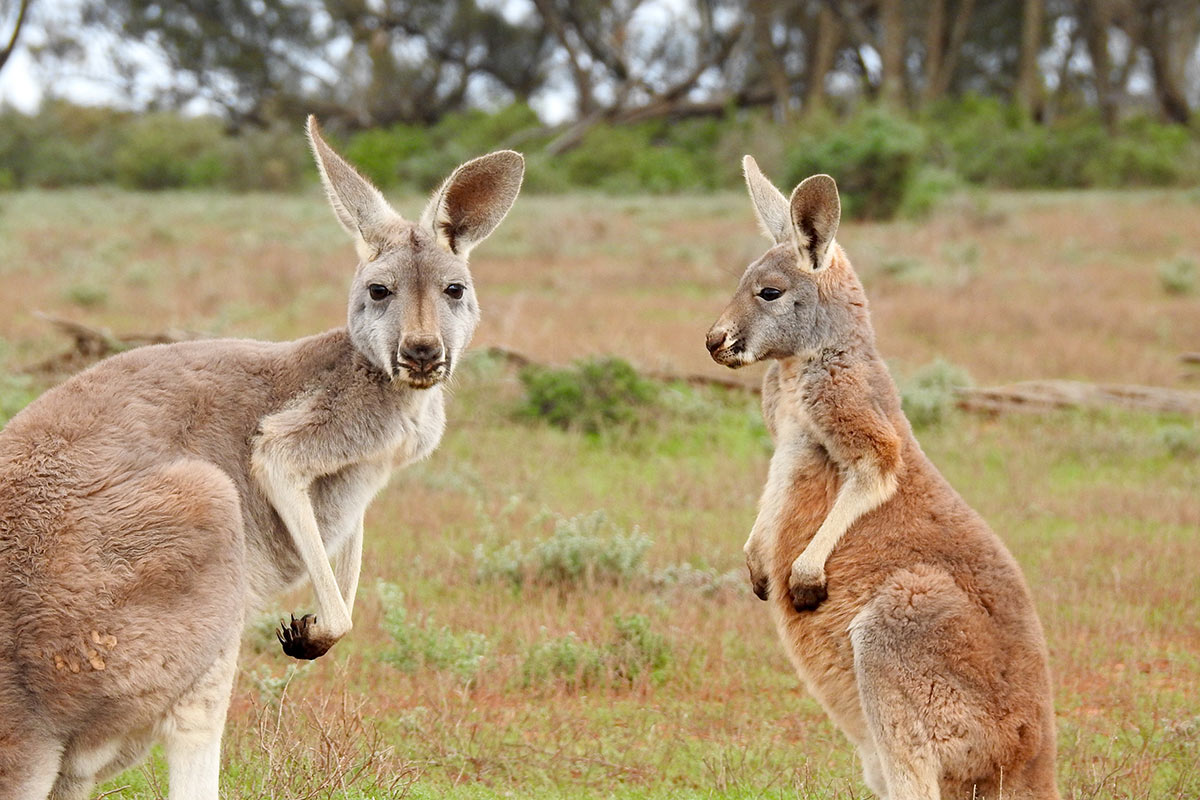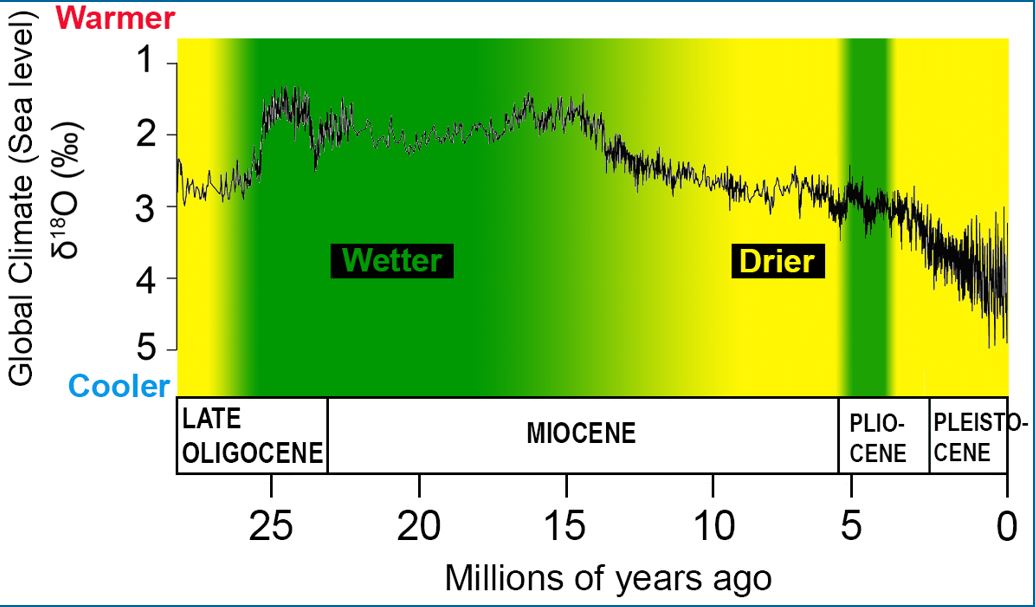
Surprising new findings by Flinders University researchers have changed scientific understanding of how kangaroo evolution was linked to environmental change over the past 12 million years.
The research paper – ‘Rapid Pliocene adaptive radiation of modern kangaroos,’ published in Science (American Association for the Advancement of Science) on Friday 5 October (manuscript number: science.aas8788) – provides fresh insights into 25 million years of ecological and evolutionary change on the Australian continent.
Co-lead authors Flinders PhD Dr Aidan Couzens (now working at Naturalis Biodiversity Center in The Netherlands) and Professor of Palaeontology Gavin Prideaux achieved this by analysing changes in tooth wear and shape among kangaroos and their close relatives, which together represent the most diverse marsupial herbivore family ever to evolve.
They found that modern kangaroos rapidly diversified in response to the spread of grasslands about 4 million years ago - and not gradually in response to increased aridity 12-5 million years ago, as was previously supposed.
Kangaroos that are grass-eating specialists (grazers) only arose within the past 1-2 million years, which the researchers say is remarkably recent when compared with herbivores elsewhere, such as hoofed mammals, which began specialising on grass several million years earlier.
“Our data suggest that many kangaroo lineages emerged during the greenhouse climatic phase 5-3.5 million years ago. Within that radiation, some groups were more favoured than others when cooler, more arid conditions returned.
They in turn diversified, and among them were the ancestors of today’s grazing red and grey kangaroos,” says Dr Couzens.
Browsing short-faced kangaroos (which ate shrubs and leaves) radiated within the past 1-2 million years, despite the spread of lower-productivity habitats, such as grasslands and arid shrublands.
This pattern is in complete contrast to the large-scale extinction of browsing hoofed mammals in the Northern Hemisphere by this time.
“The fact that short-faced kangaroos actually radiated as arid habitats became more prevalent suggests that aridity-forced dietary change is highly unlikely to have been a driver of their extinctions 50 to 40 thousand years ago,” says Dr Couzens.
These findings have global significance because they show that grassland origins were an important driver of herbivore evolution in Australia, as with Northern Hemisphere herbivores.
Importantly, though, the relatively recent diversification of grazing kangaroos and the decoupling of the link between ecosystem productivity and short-faced kangaroo diversity clearly show that assessing herbivore adaptation to environmental change based on the record for the northern continents alone will provide an incomplete picture.
Professor Prideaux says these findings are a step toward a better understanding of how climate change over time has shaped the evolution of Australia’s unique fauna.
“We are now exploring whether these evolutionary patterns hold up when we look at different parts of the skeleton, such as the feet, which might tell us about when and how hopping evolved, as well as when we employ alternate methods and investigate different groups of Australian animals,” says Professor Prideaux.

In 2019 Flinders University will launch the first and only palaeontology named degree in Australasia at the purpose-built Flinders Palaeontology Laboratory. Find out more here

